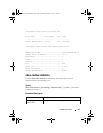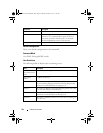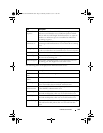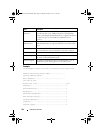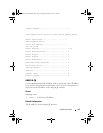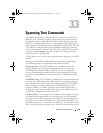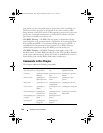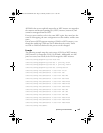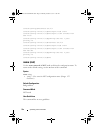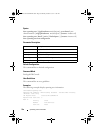
Spanning Tree Commands 729
33
Spanning Tree Commands
The Multiple Spanning Tree Protocol (MSTP) component complies with
IEEE 802.1s by efficiently navigating VLAN traffic over separate interfaces
for multiple instances of Spanning Tree. IEEE 802.1D, Spanning Tree and
IEEE 802.1w, Rapid Spanning Tree are supported through the IEEE 802.1s
implementation. The difference between the RSTP and STP (IEEE 802.1D)
is the ability to configure and recognize full-duplex connectivity and ports
that are connected to end stations. The difference enables RSTP to rapidly
transition to the Forwarding state and to suppress the Topology Change
Notification PDUs, where possible.
A VLAN ID does not have to be pre-configured before mapping it to an MST
instance.
Management of MSTP is compliant with the requirements of RFC5060.
The following features are supported by PowerConnect MSTP:
STP Loop Guard - The Loop Guard feature is an enhancement of the
Multiple Spanning Tree Protocol. Loop guard protects a network from
forwarding loops induced by BPDU packet loss. It can be configured to
prevent a blocked port from transitioning to the forwarding state when the
port stops receiving BPDUs for some reason (such as a uni-directional link
failure).
STP BPDU Guard - The STP BPDU guard allows the network administrator
to enforce the STP domain borders and keep the active topology consistent
and predictable. The switches behind the edge ports that have STP BPDU
guard enabled are not able to influence the overall STP topology. At the
reception of BPDUs, the BPDU guard operation disables the port that is
configured with this option and transitions the port into disable state. This
would lead to administrative disable of the port.
STP Root Guard - The root guard ensures that the port on which root guard
is enabled is the designated port. In a root bridge ports are all designated
ports, unless two or more ports of the root bridge are connected together. If
the bridge receives superior STP BPDUs on a root guard enabled port, root
guard moves this port to a root inconsistent STP state. This root inconsistent
state is effectively equal to a listening state. No traffic is forwarded across this
2CSPC4.XCT-SWUM2XX1.book Page 729 Monday, October 3, 2011 11:05 AM



